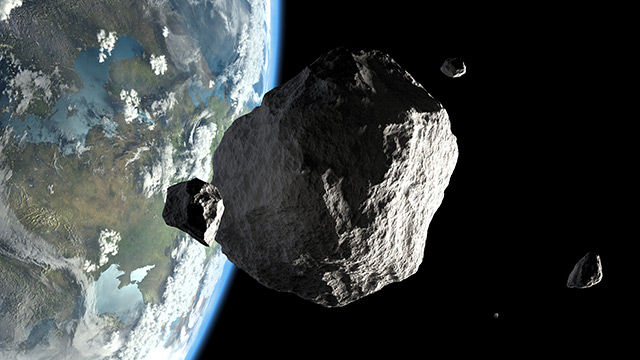Our Terms & Conditions | Our Privacy Policy
Hidden swarm of “city killer” asteroids near Venus could pose future threat to Earth, scientists warn – NaturalNews.com
Hidden swarm of “city killer” asteroids near Venus could pose future threat to Earth, scientists warn
- A hidden swarm of large asteroids near Venus could pose a future threat to Earth, but none are an immediate danger.
- Venus hosts at least 20 known “city-killer” asteroids, with many more likely undetected due to the sun’s glare.
- Simulations suggest gravitational shifts over thousands of years could redirect these asteroids toward Earth.
- New telescopes like the Vera C. Rubin Observatory and NASA’s NEO Surveyor aim to improve detection of hidden asteroids.
- Scientists stress the need for better tracking but clarify the risk is long-term, not imminent.
A hidden swarm of massive asteroids orbiting near Venus — some large enough to wipe out entire cities — could pose a future threat to Earth, according to new simulations by astronomers. While there is no immediate danger, researchers warn that gravitational disturbances over thousands of years could redirect these space rocks toward our planet, underscoring the unpredictable nature of cosmic hazards.
The findings, detailed in a preprint study uploaded to arXiv in May, reveal that Venus hosts at least 20 known co-orbital asteroids, each exceeding 460 feet (140 meters) in diameter. These “city killers” currently follow stable paths alongside Venus but could be flung toward Earth during close encounters or orbital shifts. Scientists suspect many more remain undetected, obscured by the sun’s glare.
The invisible threat
Co-orbital asteroids are space rocks that share a planet’s orbit around the sun without directly orbiting the planet itself. Venus’s co-orbitals likely originated from the asteroid belt between Mars and Jupiter, and their elongated trajectories make them difficult to track.
The study’s lead author, Valerio Carruba of São Paulo State University, emphasized that none of the known asteroids pose an imminent risk. “None of the current co-orbital objects will impact Earth soon,” he told Live Science. However, simulations spanning 36,000 years—three co-orbital cycles—suggest some could eventually veer into Earth’s path.
Why Venus’s asteroids matter
Venus is Earth’s closest planetary neighbor, approaching within 25 million miles at its nearest point. This proximity means its co-orbitals are more likely to be perturbed by Earth’s gravity than asteroids farther out. Previous research indicates that Venus’s asteroids undergo orbital shifts roughly every 12,000 years, potentially placing them on collision courses with Earth over millennia.
The real concern, scientists say, is the unknown. “How many [co-orbitals] exactly is an open question,” Carruba admitted. Current telescopes struggle to spot asteroids near Venus because they are often lost in the sun’s glare. Ground-based observations are limited to brief windows at dawn or dusk, and even then, atmospheric interference distorts the view.
The study has been misrepresented by some outlets claiming Earth faces an imminent asteroid strike. Carruba expressed frustration with the sensationalism but acknowledged the value of raising awareness. The team pointed to the recent case of asteroid 2024 YR4, initially flagged with a 2.3% chance of hitting Earth in 2032 before being ruled harmless. Such false alarms highlight the need for better detection systems.
The hunt for hidden asteroids
Help is on the way. The Vera C. Rubin Observatory in Chile, set to begin operations this year, will scan the skies with unprecedented precision, potentially doubling the number of known asteroids. Its wide-field camera and twilight surveys could uncover dozens of Venus’s hidden co-orbitals.
Meanwhile, NASA’s Near-Earth Object Surveyor (NEO Surveyor), launching in 2026, will orbit between the sun and Earth, using infrared technology to spot asteroids currently invisible to optical telescopes.
While the study underscores the need for improved asteroid tracking, it does not predict doom. The potential threat lies thousands of years in the future — a reminder that cosmic hazards evolve on timescales far beyond human lifespans.
As Carruba put it: “I believe that we should not underestimate their potential danger, but I would not lose sleep over this issue.” For now, the focus remains on advancing detection technology and dispelling misinformation, ensuring humanity is prepared for whatever the cosmos may bring.
Sources for this article include:
LiveScience.com
Independent.co.uk
NationalGeographic.com
Images are for reference only.Images and contents gathered automatic from google or 3rd party sources.All rights on the images and contents are with their legal original owners.



Comments are closed.